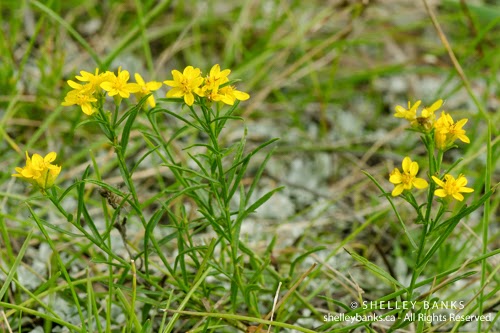 |
| Smooth Camas with fly. © SB |
Another first for me — I've never seen this prairie and parkland wildflower before, and was lucky to see so many at once. (The flowers usually appear in June, so I'm glad these native plants were still showing off their display in mid-July.)
These lily-shaped flowers grow on stalks a foot or two tall — typically in moist areas, though in some dry meadows, too — and, from my (limited) observation, seem to be highly attractive to insects of all kinds!
One of my guides (Royer/Dickinson) calls this plant, with its graceful, arching stalks of flowers, White Camas, and its formal name is Zigadenus elegans. This guide says this Camas is slightly poisonous to humans and livestock, while the related dry-hillside Death Camas or Zigadenus venenosus — no surprise with a name like that! — is very poisonous.
 |
| Close-up of single Smooth Camas flower. © SB |
 |
| Smooth Camas with mosquito © SB |
Prairie Wildflower: Smooth Camas
Location: Near Muenster, Saskatchewan, Canada.
Photo Date: July 13 and 14, 2014.
~~~~~





































